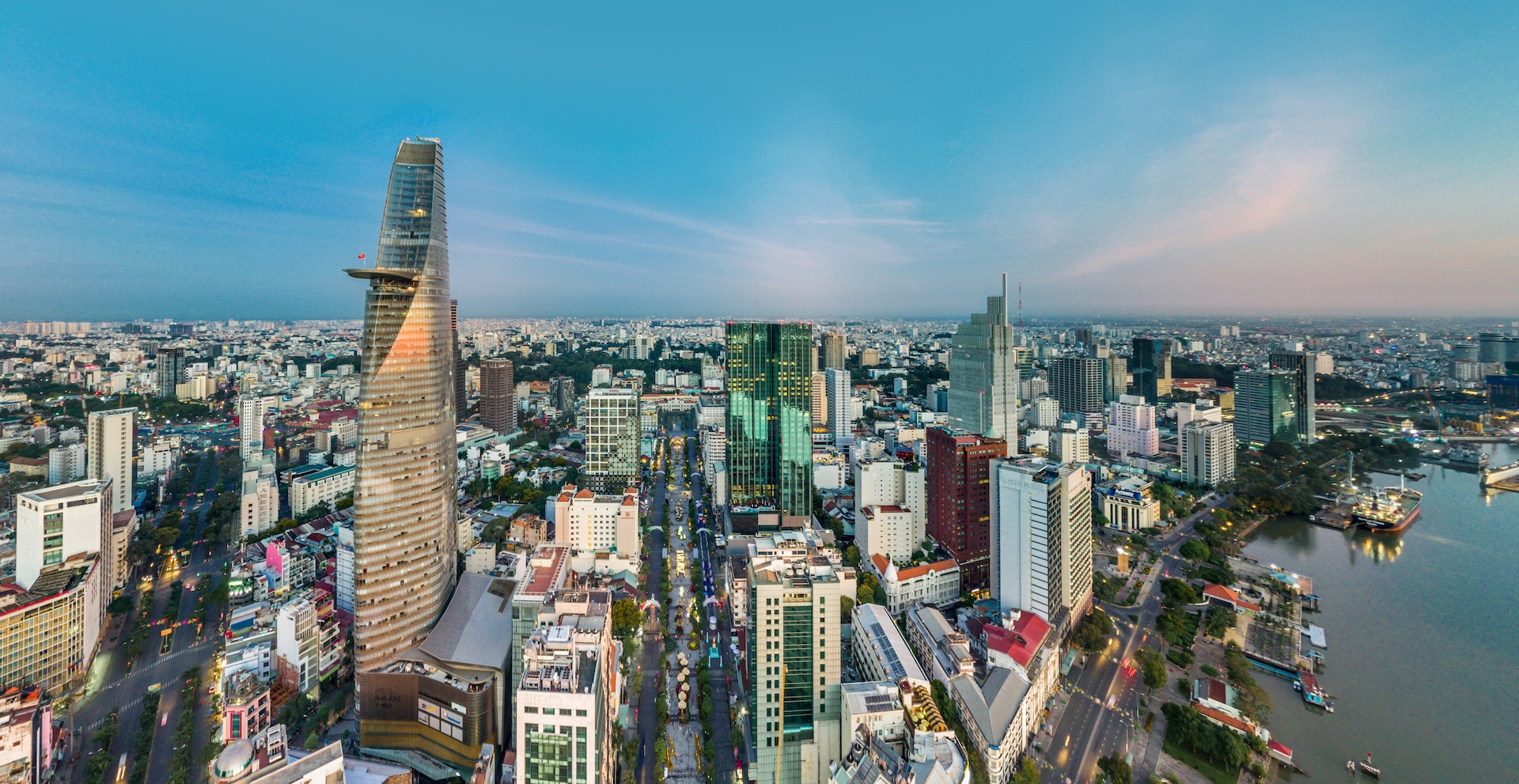UOB-HKUST IEMS study reveals growing need for sharper focus on sustainability in Belt and Road Initiative projects in ASEAN
SHARE THIS

UOB-HKUST IEMS study reveals growing need for sharper focus on sustainability in Belt and Road Initiative projects in ASEAN
Recognition of market diversity and collaboration deemed key for long-term success
Hong Kong, 1 December 2020 – There is a growing need for a sharper focus on sustainability in Belt and Road Initiative (BRI) projects in ASEAN, as a recent research, The Belt and Road Initiative in ASEAN[1], has shown. Jointly conducted by UOB and the Hong Kong University of Science and Technology’s (HKUST) Institute for Emerging Market Studies (IEMS), the research also found that Chinese companies see the importance of drawing on the diverse strengths of the ASEAN markets and the need for collaboration for continued success.
The Belt and Road Initiative in ASEAN researched Chinese companies with BRI investments in six key emerging ASEAN markets, namely Indonesia, Malaysia, Myanmar, the Philippines, Thailand and Vietnam. The study was designed to provide insights into the political, institutional and environmental factors that affect BRI project design and implementation, the potential for BRI investments to spur private investment and foreign direct investment (FDI) opportunities in ASEAN.
As part of the BRI, many Chinese state-owned and private companies have been implementing large-scale infrastructure and FDI projects in the region to promote greater connectivity between mainland China and ASEAN. The Chinese government has recognised the need to place greater priority on promoting green and sustainable BRI projects, calling for Chinese companies to take active steps to ensure that their projects comply with regulations such as environmental standards and labour laws. This addresses the criticism levelled at projects which had not adequately considered social and environmental issues.
Mrs Christine Ip, CEO – Greater China, UOB, said, “The research has shown that Chinese companies are becoming more aware of the importance of good environmental, social and governance (ESG) standards to create a more positive and sustainable impact through their investments. It is encouraging to know that some companies are making efforts to address the concerns of and to create more benefits for the local communities in ASEAN.
“We are pleased to partner the HKUST to conduct the research on the emerging markets in ASEAN in which UOB has an extensive presence. The findings will help companies gain a better understanding of what it would take to build sustainable businesses and operations in ASEAN. For example, ASEAN comprises highly diverse markets with different languages, cultures and business environments. UOB has been operating in the region for more than 80 years and has deep local presence in ASEAN’s key markets. Coupled with our sectoral expertise, we provide companies with the market-entry support and holistic banking solutions they need for their business expansion.”

From left: Angela Tritto, Albert Park, Christine Ip, Wei Du (the moderator) and Sam Cheong
To help Chinese companies tackle ESG challenges in ASEAN, the UOB-HKUST IEMS research suggests that they reach out to local consultancies and civil society or community-based groups to understand specific dynamics and to establish a meaningful dialogue. Companies can also consult potentially-affected communities regarding planned projects and work out appropriate compensation with them. For instance, one real estate company involved in land reclamation in Malaysia stepped up its efforts to address the affected community’s environmental concerns and is now also providing support to local villages and their educational programmes.
Navigating market diversity through collaboration for long-term success
The research also highlights that the six ASEAN countries have unique political, social and cultural landscapes, with historical developments and leadership changes that have shaped their growth trajectories. To navigate the market diversity for long-term success, communication with local communities and collaboration with local partners are essential. These are aligned to the BRI’s goals of promoting connectivity in policy coordination, facilities, trade, financial integration and people-to-people bonds.
Mr Sam Cheong, Managing Director and Head of Group Foreign Direct Investment (FDI) Advisory and Network Partnerships, UOB, said, “At UOB, we have been connecting companies from across our network to regional opportunities by helping them appreciate the nuances of doing business in ASEAN. The UOB FDI Advisory team, since 2011, offers a dedicated, one-stop service for companies seeking to expand in the region. To date, we have helped more than 2,800 companies, of which about one-third are from mainland China, to seize opportunities in what is one of the world’s most diverse and progressive regions. With the implementation of the Regional Comprehensive Economic Partnership and rising affluence in ASEAN, we expect to see more cross-border investments as China and ASEAN become more integrated economically.”
The implementation of the BRI in 2013 has driven strong FDI from Chinese companies to ASEAN. The value of annual FDI from mainland China to ASEAN jumped 85 per cent in the five-year period from 2014 to 2018, when compared with the four-year period before the implementation of BRI (2010 - 2013). Chinese investments into ASEAN continues to grow strongly, rising 53 per cent year on year in the first half of 2020[2].
The HKUST research team spent 25 months from 2018 to 2020 to conduct The Belt and Road Initiative in ASEAN study.
Professor Albert Park, Head and Chair Professor of Economics, Chair Professor of Social Science, and Professor of Public Policy, HKUST, and Founding Director of IEMS, said, “The Institute has been leading an interdisciplinary research programme on trade and investment under the BRI since 2017. As such, we welcomed the opportunity to collaborate with UOB Hong Kong to study in-depth how the BRI is being implemented in the key emerging markets of ASEAN and what it means for the business community. We hope the evidence-based insights can help business and government leaders take full advantage of the opportunities created by the BRI to catalyse economic development in the region.”
To download the reports of The Belt and Road Initiative in ASEAN, please visit: https://www.uobgroup.com/hk/corporate-commercial/foreign-direct-investment/about-fdi-advisory.page.

From left: Angela Tritto, Albert Park, Christine Ip
- Ends -
About United Overseas Bank
United Overseas Bank Limited (UOB) is a leading bank in Asia with a global network of more than 500 offices in 19 countries and territories in Asia Pacific, Europe and North America. Since its incorporation in 1935, UOB has grown organically and through a series of strategic acquisitions. UOB is rated among the world’s top banks: Aa1 by Moody’s Investors Service and AA- by both S&P Global Ratings and Fitch Ratings. In Asia, UOB operates through its head office in Singapore and banking subsidiaries in China, Indonesia, Malaysia, Thailand and Vietnam, as well as branches and representative offices across the region.
Over more than eight decades, generations of UOB employees have carried through the entrepreneurial spirit, the focus on long-term value creation and an unwavering commitment to do what is right for our customers and our colleagues.
We believe in being a responsible financial services provider and we are committed to making a difference in the lives of our stakeholders and in the communities in which we operate. Just as we are dedicated to helping our customers manage their finances wisely and grow their businesses, UOB is steadfast in our support of social development, particularly in the areas of art, children and education.
For media enquiries, please contact:
|
Marietta Li |
Susanna Liu |
|
UOB Hong Kong |
UOB Hong Kong |
|
Email: marietta.liky@uobgroup.com |
Email: susanna.liuwy@uobgroup.com |
|
Tel: (852) 2820 6606
|
Tel: (852) 2123 7537 |
Appendix
Markets in ASEAN share geographic and cultural similarities yet each has its development trajectory shaped by unique political, economic, social and cultural institutions. The following are the highlights of six markets’ focuses:
Indonesia – The BRI’s impetus led to a sixteen-fold increase of Chinese investments in Indonesia from 2013 to 2019 with a shift of focus from trading and mining activities to new technologies and infrastructure. To drive the market’s infrastructure and economic development, the Indonesian government hopes to direct investments to four main provinces, namely North Sumatra, North Kalimantan, North Sulawesi and Bali. Measures such as streamlining its Online Single Submission for business license applications and setting up a dedicated China desk in the government’s investment promotion agency have been put in place to attract investments.
Malaysia – Manufacturing is one of the key sectors in Malaysia and the Malaysian government hopes to attract investments in high-technology, capital intensive and knowledge-driven industries. Malaysia’s electrical and electronics industry, which has been a significant contributor to its economy, can further support investments in advanced electronics, optics and photonics, medical devices and aerospace, biotechnology, advanced materials, and in services such as tourism, information and communication technology (ICT), offshore and outsourcing, education and training. The government set up a dedicated China desk in its investment promotion agency to promote foreign direct investments.
Myanmar – The market has become a hub for light manufacturing, especially in textiles and garments. The government has a list of promoted sectors of investments that include agriculture, infrastructure, manufacturing, education, tourism, health, technology, and renewable energy. Investments are concentrated around the area of Yangon, which is the main economic hub in the market yet investors are opening new opportunities in other areas of the country. The government plays a role by establishing a steering committee to implement BRI projects.
The Philippines – The market strives to attract Chinese investors through its visa on arrival policy and relaxation of visa policies for Chinese workers. The government’s “Build Build Build” initiative[3] is expected to build infrastructure projects to improve railways, roads and highways, airports and energy facilities. The government has made efforts to improve the management of existing special economic zones and create new ones to promote industrial and urban development and to attract investors in all sectors of manufacturing industries including automotive, electronics, garments and food. It aims to increase the contribution of manufacturing to 30 per cent of total value added and 15 per cent of total employment[4].
Thailand – Thailand 4.0 policy[5] aims to unlock the country’s potential to create a developed economy with investments in next generation, automotive, intelligent electronics, advanced agriculture and biotechnology, food processing and tourism. The Eastern Economic Corridor[6] (EEC) which was initiated in 2018 offers opportunities for Chinese and Hong Kong investors through memoranda of understanding (MOUs) and cross-border collaboration.
Vietnam – Renewable energy and technology are seen to be the sectors with potential growth. The Five-Year Socio-Economic Development Plan for 2016 – 2020[7] supports the expansion of the use of renewable energy sources, creating excellent opportunities for investors specialised in solar, wind power, and biomass. Meanwhile, the government is developing a national strategy that includes the National Innovation Centre, which supports start-up businesses and transfer of technology, provides financial support, and develops pilot regulations and policies.
[1] The research was carried out from October 2018 to October 2020 through comprehensive desktop research and more than 300 in-depth interviews with government officials, representatives of business associations, entrepreneurs, members of civil society groups, as well as academic and consultancy experts.
[2] Source: Data from the Ministry of Commerce, People’s Republic of China released at a news conference on 16 July 2020, http://www.mofcom.gov.cn/xwfbh/20200716.shtml
[7] http://pubdocs.worldbank.org/en/839361477533488479/Vietnam-SEDP-2016-2020.pdf
Media coverage
Get updates from HKUST IEMS









